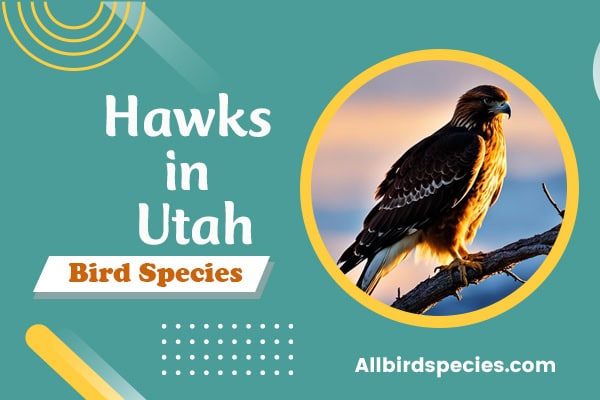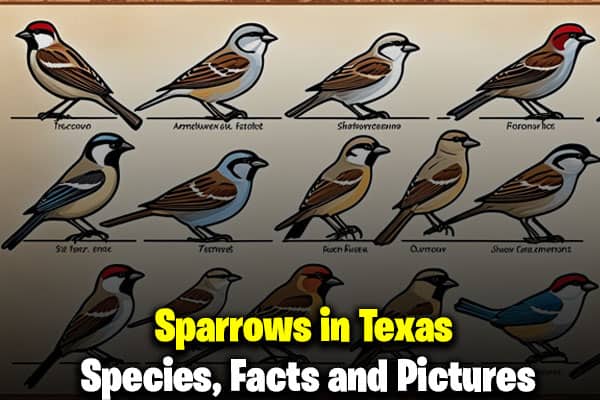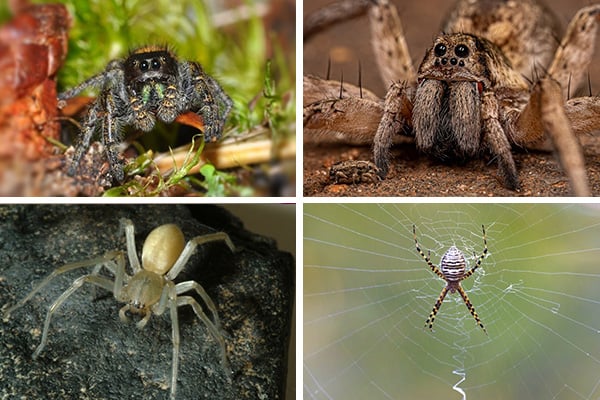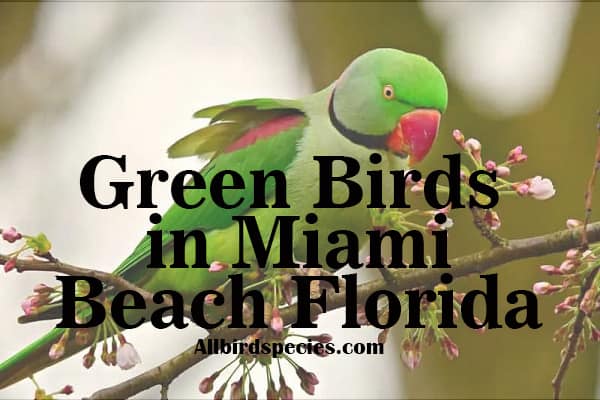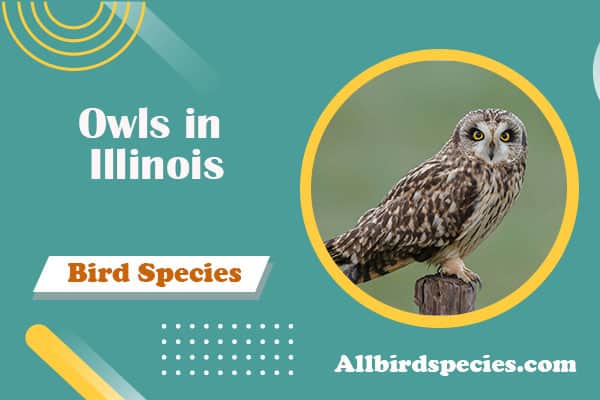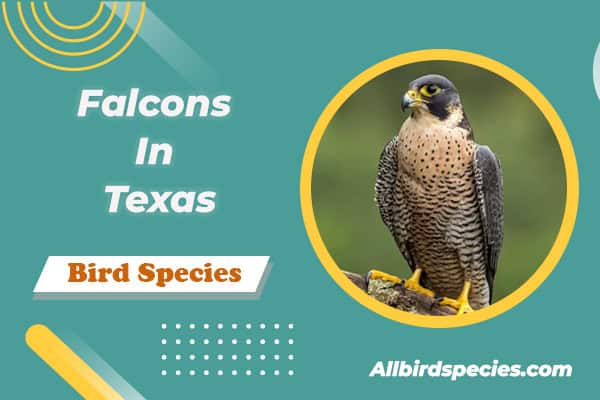10 Types of Hawks in Utah (ID Guide With Pictures)
Did you know Utah is home to over 10 types of Hawks? Some areas see up to 14 different types during migration. These birds of prey catch our eye with their beautiful flight and sharp hunting skills. We’ll look into the common hawks in Utah, their unique traits, where they live, and what they eat.
If you love birdwatching or just find hawks interesting, this guide is for you. We’ll take you on a journey into the world of hawks in Utah. You’ll learn how to spot these amazing birds in the wild.
Commonly Seen Hawks in Utah
In Utah, we see many common hawks that add to the area’s hawk diversity. Recent counts show 12 hawk species, with both local and migrating birds. These hawks are often seen all year, making bird-watching fun for both experts and beginners.
- Red-Tailed Hawk
- Cooper’s Hawk
- Sharp-Shinned Hawk
- Broad-Winged Hawk
- Northern Harrier
- Rough-legged Hawk
- Swainson’s Hawk
- Ferruginous Hawk
- Common Black Hawk
- Northern Goshawk
Learning about these hawks in Utah is just the start. As we explore each species, we’ll find out what makes them special.
1. Red-Tailed Hawk
- Scientific name: Buteo jamaicensis
- Life span: 10-15 years
- Size: (50-65 cm)
- Weight: (900-1460 g)
- Wingspan: (114-133 cm)
- State status: Breeding and common
The Red-Tailed Hawk is a fascinating bird known for its striking looks and varied behaviors. It can be found in many places, making it interesting to learn about its identification, where it lives, and what it eats.

Habitat and Range
Red-tailed hawks live in many places across North America. They like deserts, grasslands, forests, and even cities. They are common in Utah, where they find good places to nest and hunt.
Diet and Hunting Behavior
Red-tailed hawks eat small mammals, birds, snakes, and insects. They hunt from high up, using their sharp eyes to spot prey. Then, they dive fast and precisely to catch their food. Thanks to conservation, these hawks are becoming more common in many areas.
| Characteristic | Details |
|---|---|
| Size | 19.7 – 25.6 inches |
| Wingspan | 44.9 – 52.4 inches |
| Tail Color | Reddish-brown in adults, brown with dark bands in juveniles |
| Diet | Small mammals, birds, snakes, insects |
| Habitat | Deserts, grasslands, forests, urban areas |
2. Cooper’s Hawk
- Scientific name: Accipiter cooperii
- Life span: 12 years
- Size: (37-39 cm)
- Weight: (220-410 g)
- Wingspan: (62-90 cm)
- State status: Breeding and common
Learning about the Cooper’s Hawk gives us a peek into Utah’s bird world. This medium-sized raptor stands out with its unique looks, nesting ways, and hunting skills.

Nesting Behavior
Cooper’s Hawks nest in wooded areas. They build their nests with sticks, often in deciduous forests for safety. They lay three to five eggs per clutch. Both parents work hard to protect their territory and care for their young.
Diet and Prey
The Cooper’s Hawk mainly eats medium-sized birds like doves and pigeons. Sometimes, it goes after small mammals. Its hunting is impressive, thanks to its speed and sneakiness. It moves swiftly through thick foliage, showing its hunting skills.
| Aspect | Details |
|---|---|
| Physical Features | Blue-gray upperparts, reddish-brown barred chest, 14.6 to 15.3 inches long |
| Wingspan | 24.4 to 35.4 inches |
| Nesting Habits | Builds nests in wooded areas using sticks, lays 3-5 eggs |
| Diet | Medium-sized birds, small mammals |
| Hunting Methods | Agility, surprise, quick movements through dense foliage |
3. Sharp-Shinned Hawk
- Scientific name: Accipiter striatus
- Life span: 5 years
- Size: (24-34 cm)
- Weight: (87-218 g)
- Wingspan: (43-56 cm)
- State status: Migratory and rare
The Sharp-Shinned Hawk is a bird that catches the eye with its fast moves and skillful hunting. Knowing how to spot it, where it likes to live, and how it behaves makes us appreciate it more.

Habitat and Behavior
Sharp-skinned hawks love living in woods with conifers or mixed trees. They move more during migration, fitting into different places. They fly fast and catch small birds, showing off their hunting skills.
Related Video:
| Characteristic | Adults | Juveniles |
|---|---|---|
| Length | 9.4 – 13.4 inches | 9.4 – 13.4 inches |
| Wingspan | 16.9 – 22.1 inches | 16.9 – 22.1 inches |
| Upperparts Color | Slate-gray | Brown |
| Underparts Color | Reddish-brown barred | Brown and streaked |
| Primary Habitat | Coniferous or mixed woodlands | Coniferous or mixed woodlands |
| Diet | Small birds | Small birds |
4. Broad-Winged Hawk
- Scientific name: Buteo platypterus
- Life span: 12 years
- Size: (34-44 cm)
- Weight: (265-560 g)
- Wingspan: (81-100 cm)
- State status: Migratory and rare
The Broad-Winged Hawks of Utah is a stunning bird of prey. It stands out with its unique looks and amazing migration patterns. Learning about its size and features helps us see its importance in the bird world.
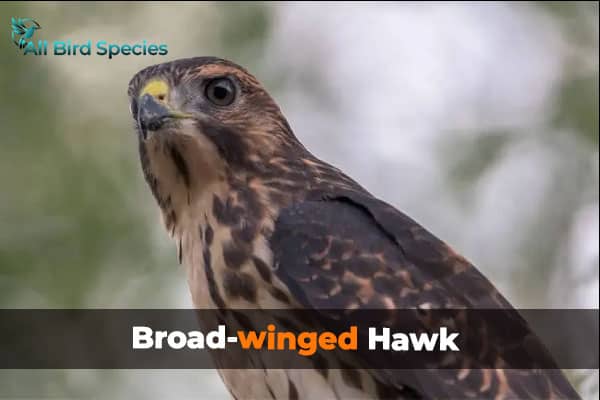
Migration Patterns
Broad-winged hawks migrate in the fall and spring. They form huge flocks, soaring high in the sky. These flocks, called “kettles,” travel long distances. They breed in North America during summer and spend winter in Central and South America.
| Feature | Description |
|---|---|
| Size | 13.4 to 17.3 inches in length |
| Wingspan | 31.9 to 39.4 inches |
| Coloration | Reddish-brown head and barred underparts |
| Migration | Forms large kettles during migration |
| Range | Breeds in North America, winters in Central and South America |
Hawks in other Regions:
5. Rough-legged Hawk
- Scientific name: Buteo lagopus
- Life span: Up to 15 years
- Size: (46-51 cm)
- Weight: (680-1470g)
- Wingspan: (132-137 cm)
- State status: Migratory and common
The Rough-legged Hawk stands 22 inches tall with a wide wingspan of 53 inches. It’s known for its elegant look in the sky. This hawk has unique features like a white tail and patterned wings. There are two color morphs, making them exciting to spot.
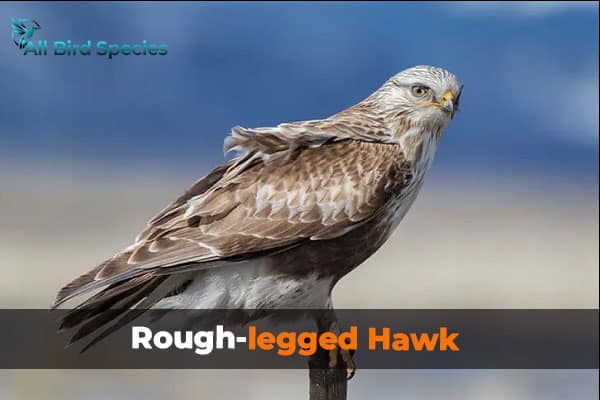
Identification Characteristics
Identifying a Rough-Legged Hawk is easy with these key traits:
- Body size: Medium, around 22 inches long
- Color morphs: Two distinct variations, including dark and light morphs
- Tail: Prominent white tail with dark bands
- Wings: Broad and patterned, enhancing their gliding ability
Habitat Preferences
Rough-legged Hawks like open spaces. They live in vast grasslands, fields, and forest edges in winter. They move south from the Arctic tundra, showing their amazing migration. Their diet is mostly small rodents. They hunt by hovering in the wind, looking for prey on the ground.
6. Northern Goshawk
- Scientific name: Circus hudsonius
- Life span: 5 – 7 years
- Size: 45-61 cm
- Weight: 350-750 g
- Wingspan: 100-122 cm
- State status: Breeding and common
The Northern Goshawk is a powerful bird of prey that catches the eye with its unique look. Birdwatchers and nature lovers need to know how to spot this hawk. Its big size and special look make it easy to recognize in the wild.

Identification Characteristics
The Northern Goshawk stands out with its size and color. It’s about 19 inches long and has a wingspan of up to 40 inches. Its feathers are a beautiful grayish-blue color. It also has eye stripes on its face that make it look even more striking.
- Size: Approximately 19 inches in length
- Wingspan: Up to 40 inches
- Color: Grayish-blue plumage
- Facial markings: Prominent eye-stripes
This hawk is not just big and good-looking. It’s also very agile and strong. This makes it a top predator in many places.
7. Ferruginous Hawk
- Scientific name: Buteo regalis
- Life span: Up to 20 years
- Size: (56-69 cm)
- Weight: (1.2-2 kg)
- Wingspan: (132-140 cm)
- State status: Breeding and rare
The Ferruginous Hawk is a stunning bird often seen in Utah’s wide open spaces. It stands out with its large size and eye-catching look. Adults can grow up to 23 inches long and have a wingspan of 55 inches. They come in two main colors, from all white to deep brown, making them easy to spot.

Their long wings and feathered legs make them stand out in the sky. This unique look adds to their beauty.
Identification Characteristics
Identifying a Ferruginous Hawk is easy thanks to its size, color, and unique features. Whether flying high or sitting low, these hawks grab our attention. Their light-colored underparts and dark wings make a striking contrast against the sky.
With their strong build and distinct look, they are among the easiest to spot in Utah.
Diet and Hunting Techniques
The Ferruginous Hawks of Utah mainly eat small mammals. Prairie dogs are a favorite snack for them. They use different hunting methods, like perching low or lying in wait to catch their prey off guard.
This flexibility helps them survive in their environment. Watching them hunt gives us a peek into their behavior and how they adapt, making spotting these hawks a special experience.
8. Swainson’s Hawk
- Scientific name: Buteo swainsoni
- Life span: Up to 15 years
- Size: (46-56 cm)
- Weight: (650-1,100 g)
- Wingspan: (119-150 cm)
- State status: Breeding and common
Exploring the Swainson’s Hawk reveals interesting facts about its identity and how it eats. This bird is known for its amazing flying skills. It draws the interest of bird lovers and nature fans.
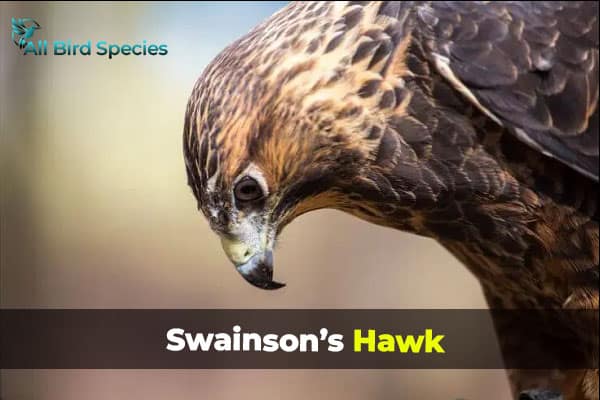
Feeding Habits
Learning about the Swainson’s Hawk’s eating habits shows its role in nature. They mainly eat insects, especially grasshoppers. They also hunt small mammals. Watching them hunt shows how they adapt to survive in their environment.
9. Common Black Hawk
- Scientific name: Buteogallus anthracinus
- Life span: 10 – 15 years
- Size: 46 – 56 cm
- Weight:0.7 – 1 kg
- Wingspan: 107 – 122 cm
- State status: Breeding and rare
The Common Black Hawk is a powerful bird of prey mainly found in the southwestern United States, Central America, and parts of South America. It’s easy to recognize with its dark feathers, broad wings, and short tail with a wide white band near the tip. The adult hawk has bright yellow legs and a yellow area near its beak, which stands out against its black feathers.

Young hawks are brown with streaks on their undersides, but they gradually turn darker as they grow older. Also, These hawks prefer to live near rivers, streams, and wetlands, where they can often be seen perched on branches or soaring above the water. Also, These environments provide the shelter and food they need to survive.
When it comes to nesting, Common Black Hawks have some unique behaviors. They usually build their nests in large trees close to water. They use sticks to construct the nests and line them with softer materials like leaves and moss. The female lays two to three eggs, which she incubates for about a month.
10. Northern Goshawk
- Scientific name: Accipiter gentilis
- Life span: Up to 15 years
- Size: (61-74 cm)
- Weight: (680-1360g)
- Wingspan: (114-132 cm)
- State status: Breeding and rare
The Northern Goshawk is a strong and mysterious bird of prey that lives in the thick forests of the Northern Hemisphere, including North America, Europe, and Asia. This powerful raptor is known for its bold look: adult goshawks have slate-gray feathers on their backs, finely barred white and gray feathers on their undersides, and a distinct white stripe above their eyes, giving them a fierce appearance.

Their broad wings and long tails help them move quickly and skillfully through dense forests. Young goshawks are brown with streaked underparts and slowly develop their adult colors over several years. These birds prefer to live in large, remote forests filled with coniferous and mixed trees, far from human activity.
When it comes to nesting, Northern Goshawks have some interesting habits. Also, They often choose mature forests for their nesting sites, building large nests high up in the trees. These nests are made from sticks and lined with bark, greenery, and feathers. The goshawks reuse and add to these nests each year, making them quite large over time.
Where to find Hawks in Utah
Utah is a great place for spotting hawks, as it offers a variety of habitats where these birds of prey thrive. Here are some of the best places in Utah to find hawks:
1. Antelope Island State Park
- Location: Great Salt Lake
- Why It’s Good: This park is a fantastic spot for birdwatching, especially during migration seasons. You can spot Red-tailed Hawks, Northern Harriers, and even Peregrine Falcons. The open landscapes make it easy to see hawks soaring above.
2. Bear River Migratory Bird Refuge
- Location: Northern Utah, near Brigham City
- Why It’s Good: This large wetland area is a haven for various bird species, including hawks. Look for Northern Harriers skimming over the marshes or Red-tailed Hawks perched on poles.
3. Fish Springs National Wildlife Refuge
- Location: West Desert, Utah
- Why It’s Good: This remote refuge is an excellent spot for seeing a variety of raptors, including Swainson’s Hawks and Ferruginous Hawks. The area’s isolation attracts a good number of birds of prey.
4. Zion National Park
- Location: Southwestern Utah
- Why It’s Good: The diverse terrain, from canyons to high plateaus, provides excellent habitats for hawks.
5. Cedar Valley
- Location: Near Cedar City, Southern Utah
- Why It’s Good: Cedar Valley is known for its open spaces, making it a prime location for hawk-watching, especially during migration. Look for Rough-legged Hawks in the winter months.
Best Times to Visit:
- Spring and Fall: These are the best times for migration when many hawks pass through Utah.
- Early Morning or Late Afternoon: Hawks are most active during these times, making it easier to spot them.
Bringing binoculars and a field guide can enhance your birdwatching experience, and joining a local birdwatching group or taking a guided tour can help you find and identify different hawk species.
Check Our Previous Articles:
Wrapping Up…
Looking at the hawks in Utah, we learn more about these amazing birds. From the big Red-Tailed Hawk to the sneaky Northern Goshawk, each one is important to Utah’s nature. Understanding their traits and actions helps us connect with Utah’s birds.
It’s also key to protect hawks in Utah. These birds make our nature beautiful and tell us about the health of our ecosystems. By spreading the word and helping conservation, we make sure future generations can still enjoy these birds and their homes.

